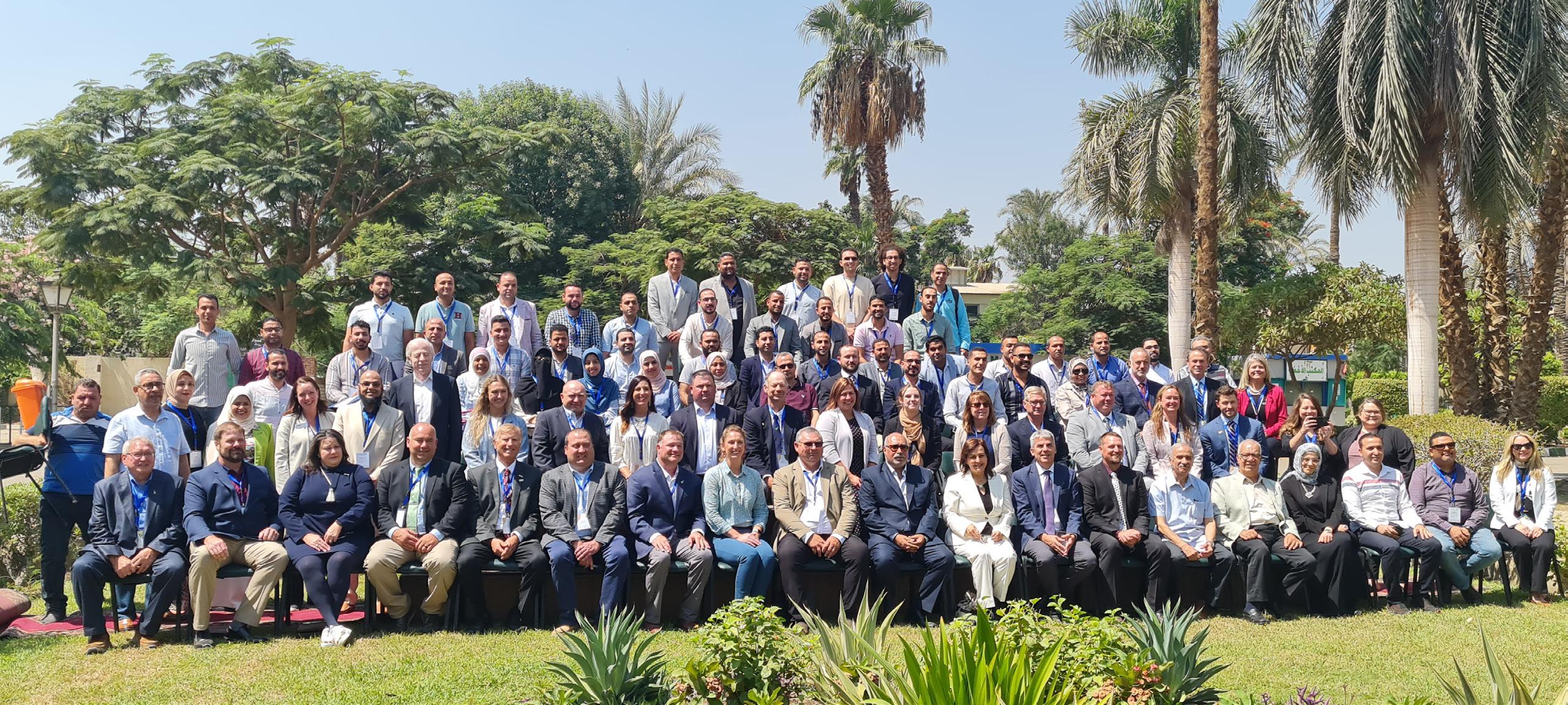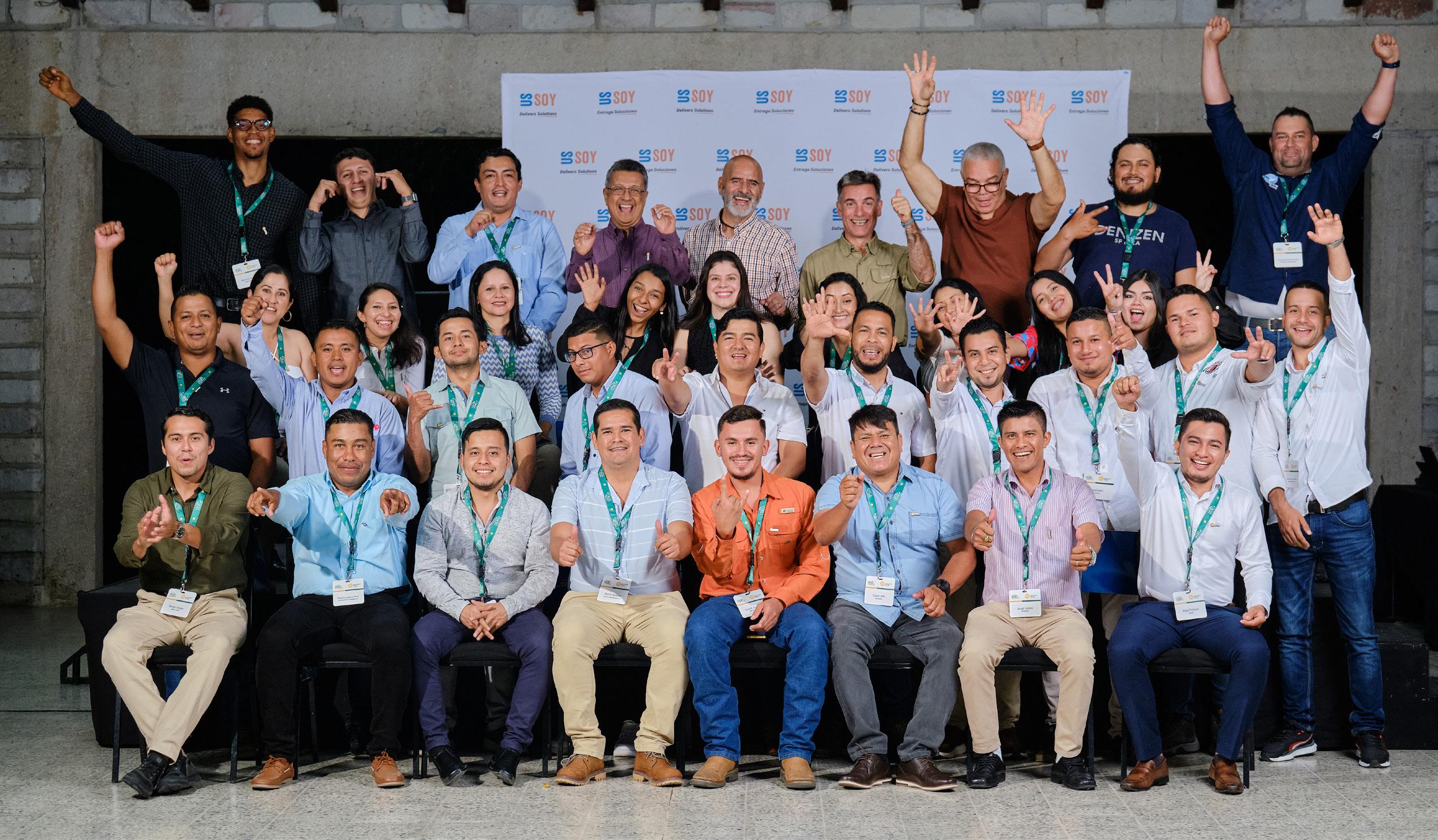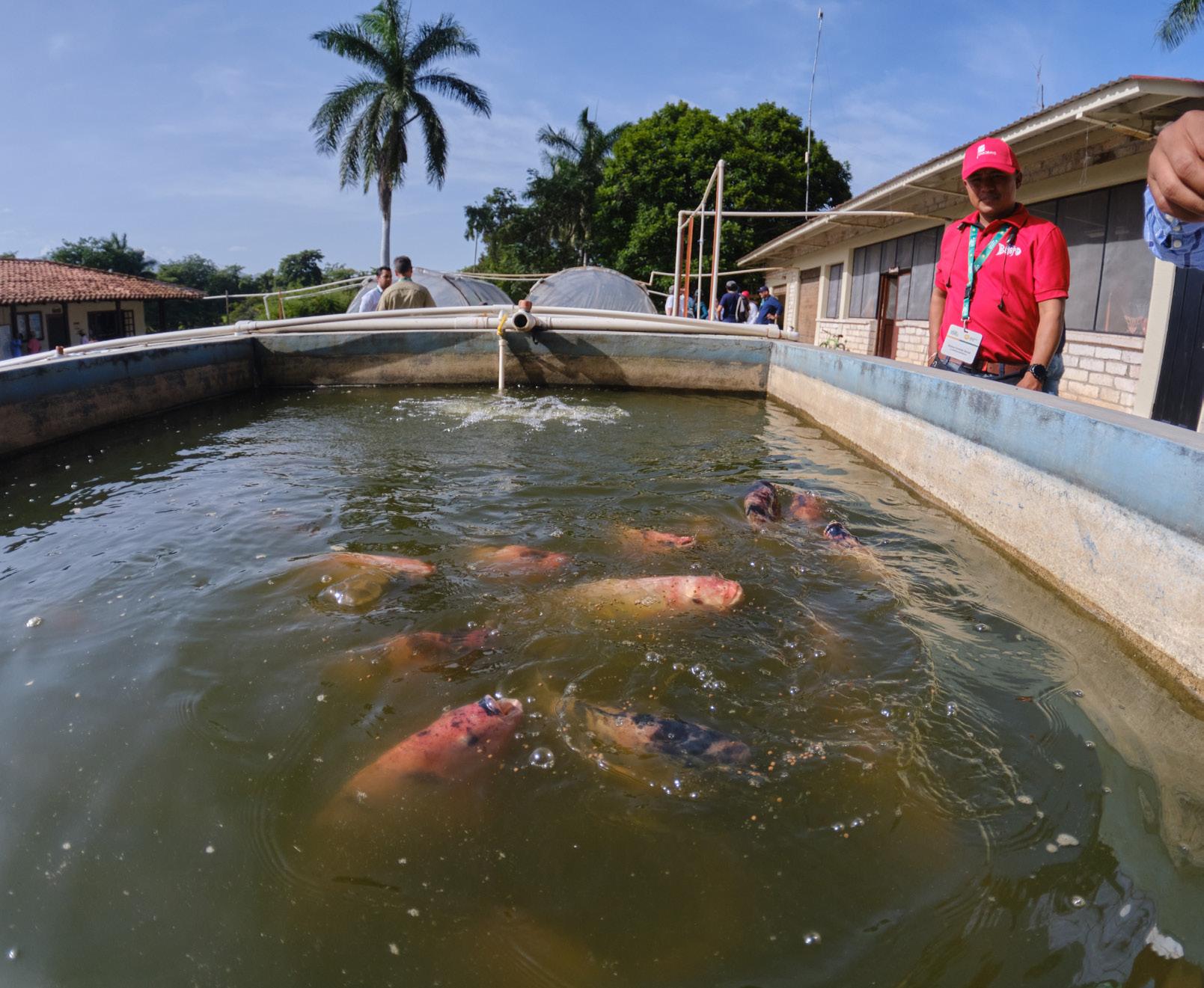
6 minute read
IL Soy and India: A Match Made in Egypt
By Joli A. Hohenstein
In a fun juxtaposition, sometimes we in U.S. and Illinois agriculture are hit with the fact that while we differentiate ourselves from other global producers, we are the same in many ways. Like other countries, we face ongoing challenges driven by global factors from politics to education to logistics to financing.
But where we in the soybean industry differentiate ourselves is emergent marketing — informational, educational outreach marketing. If customers don’t meet us where we are, we meet them where they are. That’s a key principle behind Soy Excellence Centers.
Emerging markets, those that are experiencing considerable growth and are transitioning from developing to developed countries, remain one of the best export opportunities for Illinois soybeans. They have more liquidity and increased trade; foreign investment is on the uprise.
Often, though this is not an “official” characterization, “They can’t grow enough soybeans to support their protein needs because their population is still growing,” says Mark Read, Illinois Soybean Association (ISA) District 5 Director and Vice Chair of the Soy Excellence Center (SEC) Steering Committee for the U.S. Soy Export Council (USSEC).
All of these factors are the “why” behind USSEC’s SEC. The idea is to “build tomorrow’s leaders today.” Growers and business leaders alike in these budding markets have little access to training. USSEC’s program hopes to change that –and it’s working.
“I was part of the Illinois group that went to Egypt in early 2023 with the Market Development Committee,” says Read. “It really sold all of them on SECs as a way to expand into these countries. In fact, I’ve personally been to three SECs this year. When you see them in action, there’s no question you’re sold on them.”
Todd Main, ISA's Director of Market Development, agrees wholeheartedly, and saw firsthand along with Read on a September 2023 trip to Egypt celebrating the 101st SEC cohort for poultry training production and the 100th SEC cohort for aquaculture.
“The joy on their faces and the difference it has made in their lives was palpable,” he says. “It’s a win for them — a win for the industry and a win for Illinois.”
Why Illinois? Because our state was deeply involved in establishing the SEC in Egypt, and it has paid off for all involved since the inception in 2019. Even while the Egyptian poultry industry faces global inflation, currency turmoil, and increasing feed costs, USSEC reports the country’s poultry producers have achieved 100% self-sufficiency and are exporting to several other countries. Aquaculture in Egypt has grown significantly and now ranks sixth in Africa. And soy from Illinois plays a critical role in helping Egyptians sustain their aquaculture operations. Egypt is one of our fastest-growing markets.
What Are SECs
USSEC’s vision for the SEC program is to create a global network of tomorrow’s soy leaders across the globe. In countries where access to professional development is limited or even nonexistent, SECs give soy industry members the opportunity for professional certification and career training. International experts build and administer the program locally in these emerging markets where it is needed most.
The curriculum is sector-specific, track-based, and developed with input from local partners and global experts. Current tracks offered by SECs include Poultry Production, Feed Milling, Aquaculture, Soybean Processing and Refining Technology, and Swine Production. More are expected to be added over time.
Currently, SECs operate in the Middle East and North Africa, South Asia and Southeast Asia, Sub Saharan Africa, and the Americas.
"Through the workforce training programs offered by the Soy Excellence Center, we have trained over 18,500 early-to-mid career protein professionals since its inception,” says Tori Sorensen, Chair of the SEC Steering Committee for USSEC. “We have shared knowledge and cultivated the skills of these emerging leaders, our 'Tomorrow Solvers', who now possess the expertise to make a significant daily impact and contribute to the growth of their respective companies and local economies. We are grateful for the ongoing support from Illinois Soybean Association as we continue to grow the Soy Excellence Center, building a preference and demand for U.S. soy worldwide."
What Does Tomorrow Look Like for SECs
Today, ISA continues to support the Egypt SEC and nurture that ongoing relationship. In addition to the September trip Main and Read attended, you may recall reading about the March visit that Read mentioned our Market Development Committee made as well. This success has us not sitting back and celebrating, but looking ahead to the next emerging market export opportunity. Many hours of detailed analysis, research, and groundwork have our sights set on India.
“We are leaning into these opportunities, when we vet them and see possibilities,” says Main. “Just as we’ve done in Colombia, in Egypt, and in China, we believe these efforts are the best way to have long-term, sustainable market relationships.”
India is #2 on NASDAQ’s Top Emerging Markets list. The population has more than doubled since 1950, and just this year, India surpassed China as the world’s most populous country. A key difference? While China’s population is on the decline, India’s population continues to grow, and with it, its soy foods consumption.
The country’s market for soy beverages alone is expected to increase from $61 million in 2023 to $91 million by 2028, according to Mordor Intelligence. (For reference, India’s combined soy food sales in 2020 were $54 million, according to USSEC.) This is a market hungry for protein, and they cannot produce enough to feed their demand.

“They need protein in their diets, and Illinois soybeans are an ideal source,” says Read. “We want to bring the SEC workforce training concept to their people. It’s a good opportunity and a good way to expand our exports to India."
“We have seen success with these workforce training programs being accepted. It is a good entrance into the country and the market. And of course, we will also be able to talk about the advantages of Illinois soybeans over Brazil,” he says.
The population of India is ideal for receiving an SEC program, says Main, which is why ISA, along with the South Dakota Soybean Association, has committed to supporting SEC development in India.
“The population is very sophisticated and very educated. They produce a fair amount of their own soy,” Main explains. “It is important that we are very active when we see an opportunity like this, and that we lean into it and plant a flag early.”
The bottom line, as Main and Read see it: An SEC in India provides the perfect opportunity to solidify the fact that U.S. soy – and especially Illinois soy – brings quality to their market that pays dividends.











